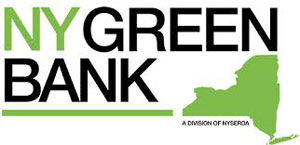A global Green Bank Network has launched at COP21, bring the world’s six green banks together and encouraging more to form to accelerate financing for efficiency and renewable energy.
The network will initially get $40 billion into global clean energy markets over the next five years.
The banks are UK Green Investment Bank, NY Green Bank, Connecticut Green Bank, Japan’s Green Fund, Malaysian Green Technology Corporation, and Australia’s Clean Energy Finance Corporation. Two nonprofits will coordinate the network, Natural Resources Defense Council (NRDC) and Coalition for Green Capital. ClimateWorks Foundation is providing seed funding.
Green banks will work together to address market barriers, standardize tailored financial products and processes, and aggregate data to expedite clean energy deployment around the world.

NY Green Bank, for example, is capitalized at $1 billion, and is currently financing solar installations at 6000 homes, 160 distributed wind energy projects for residential, commercial and agricultural customers, and low-cost financing for clean energy and energy efficiency improvements at 12,000 homes in the state.
Last year, The Green Bank Act of 2014 was introduced in the US Congress, but as you would expect, it didn’t get far. It would create permanent, reliable, low-cost financing for clean energy and energy efficiency projects across the US and provide seed funding for state Green Banks. A dozen states are actively considering starting one, recently attending the first Green Bank Academy.
In a country that’s severely rescinded green economy commitments, the UK Green Investment Bank is the most active investor in renewable energy and energy efficiency. Now, the conservative government wants to privatize it, stripping the requirement that it invest solely in low carbon projects.
Australia, on the other hand, will allow its green bank to begin financing wind projects again, in a reversal of the previous Prime Minister’s ban.
"Green banks are public entities created to partner with the private sector to increase investment in clean energy and eventually make it mainstream, no longer needing public assistance," explains Doug Sims of NRDC. Once they identify barriers to private financing, they lower the risk using various tools. They establish a successful track record of repayment, banks and other investors start making loans and leases without needing much if any help from the green bank, he says.
"Meeting commitments coming out of Paris will require a profound transformation in global energy investment, making the global scale-up of a Green Bank Network a critical tool, says Shelley Poticha, Director of Urban Solutions at NRDC.
Big Banks Still Finance Coal
The world’s largest banks keep rolling out press releases on increasingly large investments in renewable energy, but over the past five years, they have still invested $257 billion in coal, according to a report released at COP21, "The Coal Test."
And during that time, they spent 40% of that on financing renewable energy – $105 billion.
Top 10 Banks Financing Coal: 2009-2014
Citigroup: $19.7 billion (while committed to $10 billion a year for green economy investments).
JPMorgan Chase: $18.8 billion
Royal Bank of Scotland: $15.8 billion
BNP Paribas: $14.8 billion
Bank of America: $14.4 billion
Morgan Stanley: $13.9 billion
Deutsche Bank: $13.8 billion
Barclays: $13.8 billion
Credit Suisse: $10.9 billion
UBS: $10.8 billion
Goldman Sachs ranks #13 at $9 billion; HSBC is #19 at $7 billion and Wells Fargo is #21 at $5.4 billion.
To their credit, a slew of banks have stopped (or greatly reduced) financing mountaintop removal mining in the US – Barclays, Bank of America, Citigroup, Credit Suisse, Morgan Stanley, JPMorgan Chase and Wells Fargo.
Recently, Morgan Stanley announced it would no longer finance new coal-fired power plants in advanced nations, but that’s not a big leap given that no new ones are planned. They still support utilities which run largely on coal, and support expansion of mining and power plants in developing countries, says the report.
"Continued business-as-usual financing of coal and other fossil fuels will make effective climate action impossible. The climate imperative with coal is clear and urgent: we must keep it in the ground," says the report.
You can see what a difference these banks could make by eliminating these investments: a mind-blowing 2440 coal-fired power stations are in some stage of development, according to Climate Action Tracker.
Most are in China – or financed elsewhere by state-owned banks. Given China’s climate commitments they may well not go forward, but if they do the world has zero chance of staying under 2°C – these plants alone would overshoot emissions goals by 400%.
Read our article, JP Morgan, Bank America, Citi Still Top Coal Financiers.
Read "The Coal Test":
